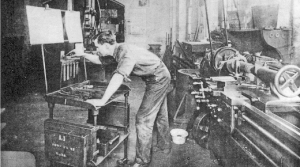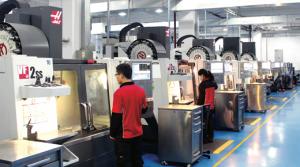All Features

Ryan E. Day
Sponsored Content
Building airplanes and spaceships poses some of the most unique engineering and manufacturing challenges mankind has ever encountered. Fortunately, you don’t have to build rockets to benefit from rocket science. Manufacturers of most any product can improve their efficiency and…

Jesse Lyn Stoner
Sometimes leaders make bad decisions or harm team morale by making autocratic decisions without involving others. And other times they waste their team’s time by unnecessarily involving them.
How do you know when and how much to involve your team in decisions? Sometimes the answer is pretty…

Jim Benson
There are those days where your personal kanban is on fire. You’re in a state of flow and tickets are just moving right along. The days go by and you look at your “done” column… it’s full. Really, really full.
The “done” tickets seem to swim. There are so many of them! You’ve been productive, but…
Mike Richman
One of the real joys of publishing Quality Digest is the opportunity it affords me to personally interact with and learn from our authors and contributors. These subject matter experts are leaders in their respective fields, and never fail to provide actionable insight into how to achieve lasting…

Mark Whitworth
Reading the Automotive Industry Action Group’s CQI-8 Layered Process Audit (LPA) Guideline, you might notice a line saying LPAs are “completed on site ‘where the work is done.’”
For lean manufacturing experts, this specific quote might bring to mind gemba walks, a method where leaders observe and…

Dirk Dusharme
The June 9, 2017, episode of QDL looked at MEP program funding, nanoholograms, and banning laptops. Plus, we talked to Lolly Daskal about “leading from within.”
MEPs are Essential to Rebuilding American Manufacturing Competitiveness
Last month, President Trump submitted a “Skinny Budget” that aims…

Mike Richman
F unny I should be writing this op-ed at this time, as our friend and colleague, Quality Digest’s editorial director Taran March, is currently traipsing around Paris and its surrounding environs, no doubt enjoying a baguette or brioche or some other culinary delight. Gratefully, that’s about the…

Wesley McGrew
Last month, the WannaCry ransomware attack hit more than150 countries and infected tens of thousands of systems worldwide. Among those victimized were England’s National Health Service, automobile manufacturers, and government systems. The worm’s ominous red ransom screen, informing the user that…

Lolly Daskal
After decades of coaching powerful executives around the world, I have observed that leaders rise to their positions relying on a specific set of values and traits. But in time, every executive reaches a point when his performance suffers and failure persists. Very few understand why or how to…

Bruce Hamilton
For me, Taiichi Ohno and Shigeo Shingo are a bit like the Lennon and McCartney of waste elimination. Together they frame the technical and social sciences of what we call lean today.
Taiichi Ohno tells us there are seven wastes that account for 95 percent of the elapsed time between “paying and…
Ryan E. Day
I remember my first trip to Michigan in 2012. I was covering the Ford Motor Co.’s annual Trend Conference and had the opportunity to meet Alan Mulally, who gave a compelling presentation explaining the vision, strategy, and implementation of the One Ford plan. I was impressed more with the man…

Jonathan O’Hare
The execution of an inspection plan is critical for ensuring the continuous production of quality products. The purpose of this article is to explain how software tools can be used to maximize utilization of the inspection system within the main control loop once the inspection plan has been…

Mark Rosenthal
It was September 1901, in Dayton, Ohio, and Wilbur Wright was frustrated. The previous year, 1900, he had built and tested, with his brother Orville’s help, their first full-size glider. It was designed using the most up-to-date information about wing design available. His plan had been to “kite”…

Ryan E. Day
Sponsored Content
Founded in 1927 to produce aluminum splints—cutting edge at the time—Zimmer Biomet is a medical device company commanding second place in the entire world’s overall orthopedic market share. The organization’s stated purpose is to “Restore mobility, alleviate pain, and improve the…

John Bell
Do Less Better is the name of my book (Palgrave Macmillan, 2014). Do less better is also a culture and a strategy of organizations and their leaders. Do-less-better practitioners are fanatical about focus and simplification; herein lies the secret of their success. Yet, do less better isn’t…

Susan Fowler
The CEO rejected my proposal by explaining, “Susan, your problem is you keep creating nine-ton elephants for two-ton cages.”
I couldn’t believe what I was hearing. This man was putting the kibosh on a cutting-edge product based on his limited perspective and lack of imagination. What did he know…

AssurX
A common pitfall in quality management system (QMS) process automation occurs with a poorly planned process automation strategy. Too often, the temptation is to automate all quality processes at once and streamline the entire eQMS process in one giant undertaking. However, real-world experience…

Mike Figliuolo
During times of excessive work and crisis, something has to give. Sometimes brutal prioritization is the only way to make it through challenging times with your sanity intact.
It happens to all of us. The universe, in its infinite wisdom, determines this month, of all months, is the month to test…

Alaina Love
It’s usually a prescient sign that it’s not going to be a great meeting when two women walk into your office and one is trembling while the other is on the verge of tears.
Such was the scene early in my career when I was an HR manager for a large organization. Both women were there to see me…

Gwendolyn Galsworth
There is an enemy in your company, and it’s invisible. You can’t see it because it literally is not there. Yet its impact is massive on every level of the enterprise, from boardroom to marketing to operations to the field staff. And the only way we have even the smallest chance of destroying it is…

Ryan E. Day
During the 1950s, W. Edwards Deming championed quality management philosophies that helped Japan develop into a world-class industrial center. In 1954, Joseph M. Juran was invited to lecture by the Union of Japanese Scientists and Engineers. His visit marked a turning point in Japan’s quality…

DNV GL
The internet of things (IoT), robotics, augmented reality, 3D printing... look at megatrends, and despite their unique attributes and myriad differences, you’ll find that they all have one thing in common: time—or more precisely, the fact that there’s always less of it.
No matter how long your…

Miguel Noguerol
The restaurant industry confronts many of the leadership challenges that other industries, corporate leaders, and entrepreneurs face. Chefs and chef-owners play a significant leadership role in their organizations through a variety of operational and social processes. Among these leaders, only an…

Ryan E. Day
Sponsored Content
Everyone in manufacturing has heard about the fantastic properties of composite materials, but if you’re not involved in satellite communications (SATCOM), you’ve probably never heard of Eclipse Composites. If you are into SATCOM and particularly SATCOM antennas, you know the…

Mike Richman
It’s easy to sit here aghast at the big, attention-getting customer service missteps that have recently blown up into public relation nightmares for United Airlines and American Airlines. These issues aren’t limited to airlines, however. During the past few years, companies in the automotive, life…